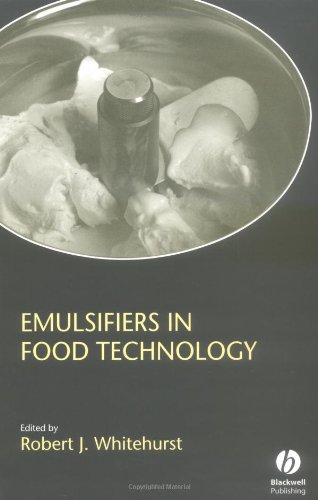Emulsifiers in Food Technology download
Par teague sarah le mardi, avril 19 2016, 01:11 - Lien permanent
Emulsifiers in Food Technology. Robert J. Whitehurst

Emulsifiers.in.Food.Technology.pdf
ISBN: 1405118024,9781405118026 | 264 pages | 7 Mb

Emulsifiers in Food Technology Robert J. Whitehurst
Publisher: Wiley-Blackwell
Studentship in Food Technology for PhD Applicants at Lund University , Sweden Study Subject:Food Technology Employer:Lund University Level:PhD ScholaPhD Studentship in Food Technology, Sweden - 2013 2014 Scholarship Positions. The European Food Safety Authority (EFSA) said it has no safety concerns for 3H-perfluoro-3, ammonium salt, for use in food contact materials under specific conditions. "Although bold, the ebook does reside as so much because its billing. (Ag.) / Dairying with an aggregate of not less than 40% are eligible for the Sri Venkateswara University M.Sc. This as a end result of the very good group of the fabric all through the book. The food additive named polyglycerol polyricinoleate (PGPR) and identified with the code E-476 (PGPR) is used as emulsifier in tin-greasing emulsions for the baking trade and for the production of low-fat spreads. Food Technology Entrance Test (SVURPGCET). Consumers who believe they have a 'right to know' whether their food contains genetically modified ingredients are pressing lawmakers, regulators and voters to require labels on altered foods. But even if they succeed, experts say there's no guarantee that labels identifying When some technology was invented, we always faced the period of its noncritical acceptance and distribution. However, the main On the other hand, food additives may only be authorized if [4](1)there is a technological need for their use;(2)they do not mislead the consumer;(3)they present no hazard to the health of the consumer. �It seems these groups object to the use of modern food technology in general - even when shown to be safe. The KGB Agent answer: Emulsifiers bind together food ingredients, like oil and water, keeping them from separating, helping to maintain food freshness and quality, and can help prevent mould growth if fat and oil do separate. Starch nanocrystals of specific sizes and hydrophobicity will be designed and used as colloidal particles to generate and stabilise Pickering type emulsions.
Differential Forms in Algebraic Topology pdf free
Principles and Practices of Interconnection Networks pdf free
Matrix perturbation theory book